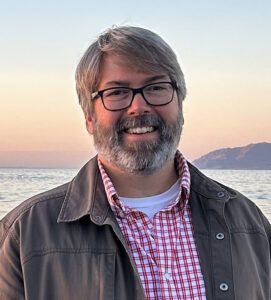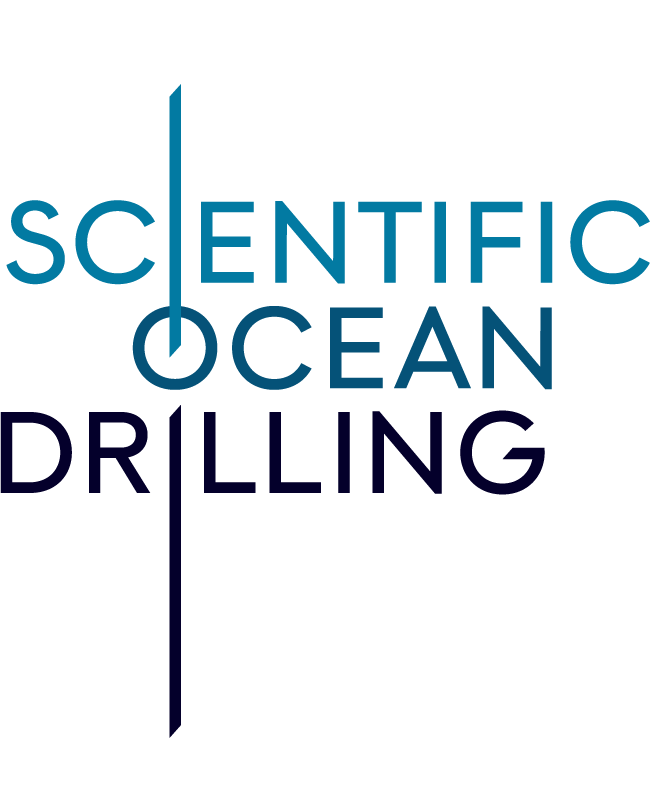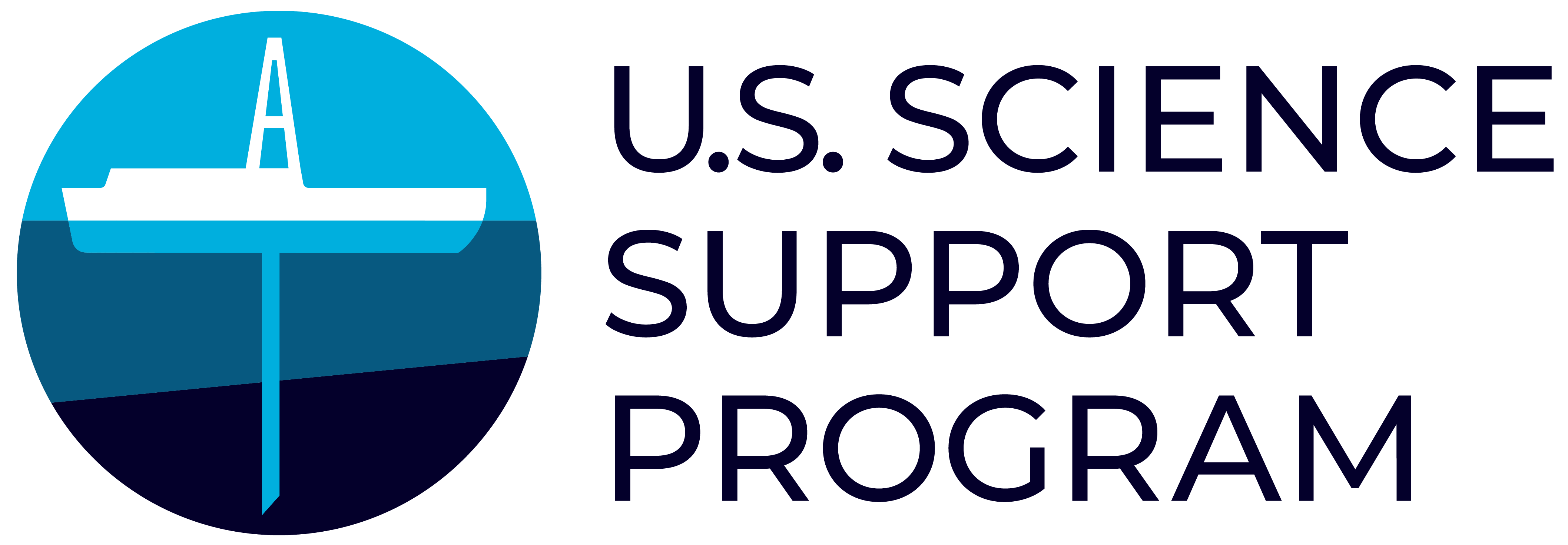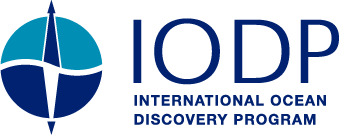Joel Johnson
University of New Hampshire
2024-2025 Distinguished Lecturer
Embrace diagenesis: The role of methane in carbon and sulfur sequestration in marine sediments
 In marine sediments, authigenic minerals, formed after deposition of the sediments, serve as geological archives of paleo-pore water conditions that reflect changing environmental conditions through time. Globally, the presence of organic carbon and seawater sulfate in near-seafloor marine sediments drives organoclastic sulfate reduction (OSR), increasing alkalinity and sulfide species in the porewaters and resulting in pyrite and authigenic carbonate formation in marine sediments. These precipitates are a common occurrence in modern organic carbon bearing marine sediments and are observed in outcrops of ancient black shale sequences on land. Below the sulfate reduction zone, organic carbon drives methanogenesis in marine sediments and at the boundary of sulfate and methane depletion, known as the sulfate-methane transition zone (SMTZ), additional alkalinity and sulfide production is driven by the anaerobic oxidation of methane (AOM). This can result in additional authigenic carbonate and pyrite formation beyond that produced by OSR. The depth of the SMTZ is controlled by the availability of organic carbon, sulfate, and methane and is largely driven by changes in sedimentation rate and/or changes in the flux of methane. Through time, the result is a moving geochemical front (the SMTZ) that leaves a wake of authigenic mineralization in its path, overprinting, cementing, or replacing the originally deposited primary minerals, rock fragments, and biogenic particles. Methane seeps represent one end member environment where the SMTZ exists at or near the seafloor, whereas in methane-limited systems, OSR dominates and the SMTZ exists at greater depths.
In marine sediments, authigenic minerals, formed after deposition of the sediments, serve as geological archives of paleo-pore water conditions that reflect changing environmental conditions through time. Globally, the presence of organic carbon and seawater sulfate in near-seafloor marine sediments drives organoclastic sulfate reduction (OSR), increasing alkalinity and sulfide species in the porewaters and resulting in pyrite and authigenic carbonate formation in marine sediments. These precipitates are a common occurrence in modern organic carbon bearing marine sediments and are observed in outcrops of ancient black shale sequences on land. Below the sulfate reduction zone, organic carbon drives methanogenesis in marine sediments and at the boundary of sulfate and methane depletion, known as the sulfate-methane transition zone (SMTZ), additional alkalinity and sulfide production is driven by the anaerobic oxidation of methane (AOM). This can result in additional authigenic carbonate and pyrite formation beyond that produced by OSR. The depth of the SMTZ is controlled by the availability of organic carbon, sulfate, and methane and is largely driven by changes in sedimentation rate and/or changes in the flux of methane. Through time, the result is a moving geochemical front (the SMTZ) that leaves a wake of authigenic mineralization in its path, overprinting, cementing, or replacing the originally deposited primary minerals, rock fragments, and biogenic particles. Methane seeps represent one end member environment where the SMTZ exists at or near the seafloor, whereas in methane-limited systems, OSR dominates and the SMTZ exists at greater depths.
Carbonate and sulfide authigenic minerals are often a nuisance to paleoceanographers and sedimentologists who seek to reconstruct original sea surface, water column, and sea floor conditions through time, but they are also the manifestation of paleo-pore fluid reactions through time, which can help us all reconstruct carbon and sulfur transformations, their sequestration in marine sediments, and the broader mechanisms that drive shallow subseafloor diagenesis through time.
In this talk, I will review early diagenetic processes in marine sediments and use scientific ocean drilling data from ODP Leg 204 (Cascadia), NGHP-01 (India), IODP Exp. 386 (Japan), and UT-GOM2-1 and -2 (Gulf of Mexico) to reveal a range of processes that can be examined through the detailed integration of pore fluid geochemistry, sedimentology, and physical properties data. The results emphasize the important role of methane in marine sediments, both as a driver for geochemical processes and a respondent to changing environmental conditions.
Dr. Joel E. Johnson, Professor and Chair in the Department of Earth Sciences at the University of New Hampshire, received his B.S. from the University of Minnesota, Duluth, his M.S. from the University of Illinois, and his Ph.D. from Oregon State University. Joel was a post-doctoral fellow at the Monterey Bay Aquarium Research Institute and joined the University of New Hampshire as an Assistant Professor in the Department of Earth Sciences in 2005. His research is focused broadly on the geologic interpretation of recent marine sedimentary sequences in order to reconstruct the geologic, geochemical (diagenetic), tectonic, and oceanographic processes that occur and interact during the evolution of continental margins. In most of his recent research projects, these reconstructions have been used to understand marine methane cycling and the evolution of methane hydrate systems through time. Joel has experience as a shipboard sedimentologist on four scientific ocean drilling expeditions and has coring, seafloor mapping, and seismic data acquisition experience on 20 research cruises. He has also twice taught a short course for IODP on shipboard sedimentology. Joel routinely works with international science teams from data collection to follow-up laboratory measurements and integrated synthesis. His publications range in spatial scale from sediment grain studies to plate boundary tectonics and timescales of modern to tens of millions of years. At UNH Joel teaches undergraduate and graduate courses in geological oceanography, sedimentology, structural geology, and geotectonics.
LECTURE SCHEDULE
- October 3, 2024 — Oregon State University, Corvallis, OR
- November 21, 2024 — University of Florida, Gainesville, FL
- January 31, 2025 — Kent State University, Kent, OH
- February 14, 2025 — University of Iowa, Iowa City, IA
- February 19, 2025 — Chesapeake Biological Laboratory, Solomons, MD
- March 27, 2025 — University of Kentucky, Lexington, KY
- April 18, 2025 — Northern Illinois University, DeKalb, IL






